Creative Cloud All Apps
Rp868.686/mo
Get Photoshop and the entire collection of creative apps across desktop and mobile. Learn more
Express the unexpected with abstract photography, and see how texture, perspective, scale, and shutter speed allow a photographer to create intriguing abstract art.
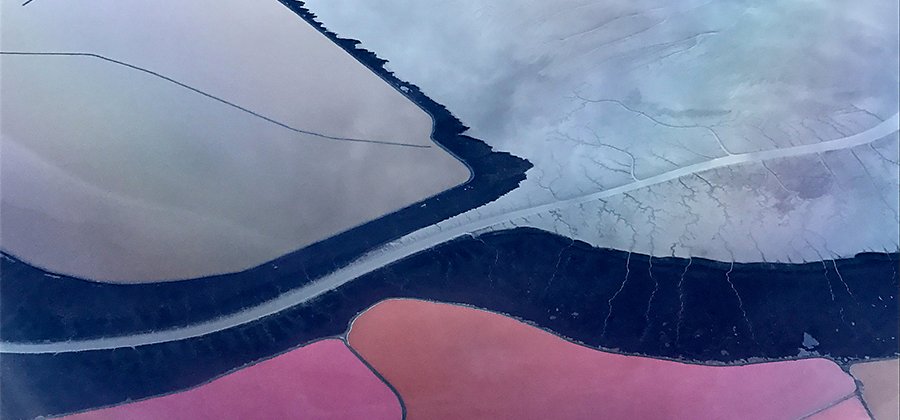
Abstract photography consists of images created using photography materials and equipment that don’t have an immediate association with the physical world. Abstract photographers use perspective, movement, and light to transform the world we see into an unexpected, often unrecognizable image. “Abstract photography is not representational. It might explore the texture or detail of everyday objects, or make you think of something else,” explains professor and photographer Tina Tryforos. There’s no exact step-by-step guide to creating the abstract, but there are some general principles artists can experiment with to bring their photographs into the abstract realm.
Typically, photographs are representations of the real world, but abstract images take things in a new direction. “I always ask beginners to think about the world in a less concrete way. Explore new things and think about light and shadow in a different way, and consider shape and repetition. I try to encourage them to step outside of what they know,” says Tryforos.
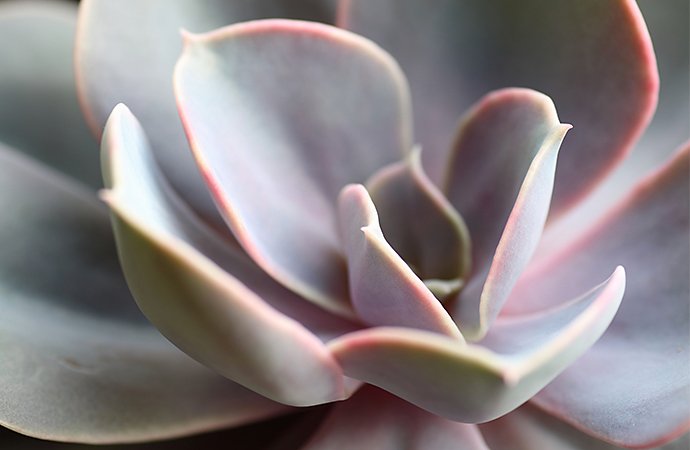
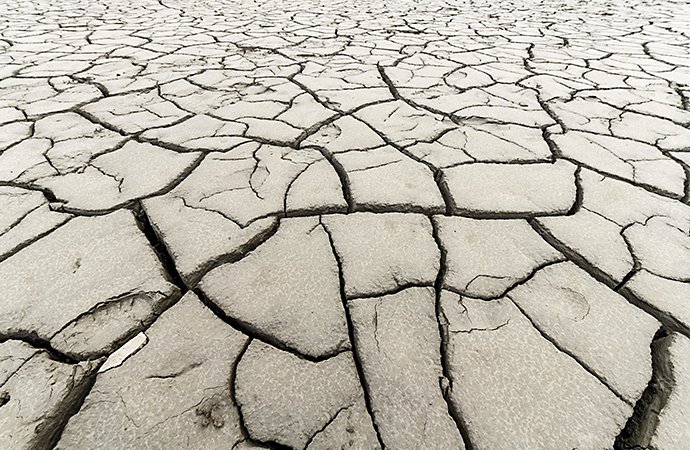
By changing the way you look at the world, and the perspective you view through your camera lens, you can find something unique to convey with an abstract image. Instead of capturing your still-life photo from a traditional perspective, try a few different angles and see what it looks like from below or above. Train your eye to look beyond what’s right in front of you.
A great way to explore a new perspective is by zooming in on recognizable subject matter. Artists like Aaron Siskind, for example, play with scale to examine and add emphasis to the details of an object. “A lot of people use macro lenses to do this type of photography because it simplifies the subject,” explains Tryforos. Using a macro lens can help you explore those details. Consider taking a macro photograph of sand on a beach. When you remove the sand from the context of the beach, and instead focus on the shadows, texture, and lighting of those individual grains, you’ve created an abstract image.
While abstraction aims to abandon subject matter, landscape photography captures an environment and realistically showcases its beauty. Those goals may seem at odds, but nature can inspire stunning abstract landscape photography.
Aerial shots and intentionally moving the camera or obscuring the scale of a photo can transform recognizable landscapes into intriguing abstract images. For example, if you pan your camera quickly past a forest as you take a photo, the colors will blur and the outlines of each branch will melt away. By approaching common landscapes from a new perspective, you can transform them into the abstract.
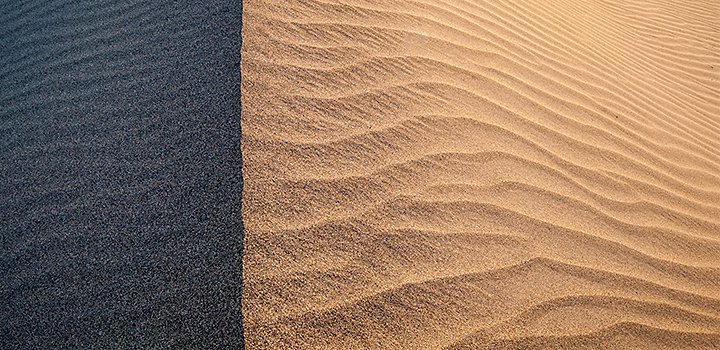
Consider experimenting with texture and tonality in your photos. With abstract photography, “you can turn a photo of an old radiator with peeling paint into something else that focuses on pattern, color, light, and texture,” says Tryforos. Different textures evoke different atmospheres and feelings in your viewer, so see what you can create with just the color and shapes in front of you.
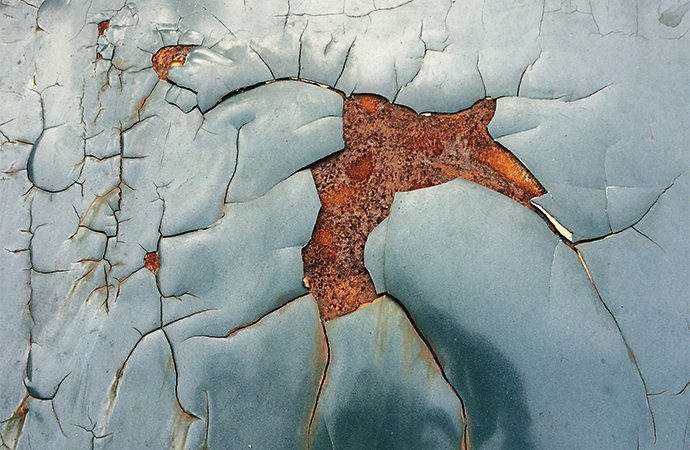
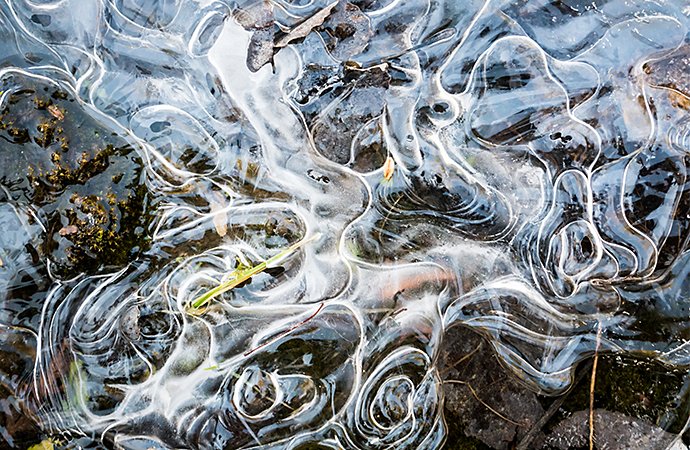
Nature photography that captures new perspectives of the ocean, sky, or forest is a great way to experiment with texture. Aerial photography of the ocean can make the colors and shapes of the waves blend together into fascinating patterns. The geometric shapes of an industrial building may look like a patterned textile if you shoot it from the right angle. Whatever you choose to capture, taking a subject out of context and focusing on its textures and tones can help you create amazing abstract work.
Traditional photos are taken with a fast shutter speed and capture a single moment, frozen in time. When you add motion to the image, it creates some abstraction, and with a slower shutter speed, you can create long exposure photos. When you leave the shutter of your camera open for longer, you can capture the motion blur of a car traveling down a street. By keeping the camera still, you can record the motion of the car in your shot and keep everything else static. The car will look like a streak of color across the image, while the rest remains recognizable. Now consider exploring the motion blur of continuously moving things, like water or smoke. By bringing new elements into the image, you can transform ordinary things into the ethereal.
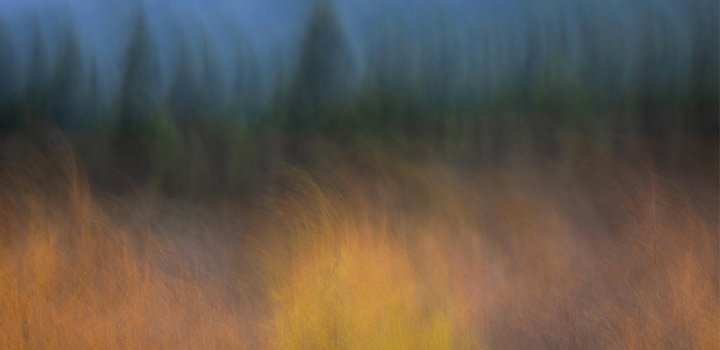
Great abstraction doesn’t just happen in camera. It also happens in post-production. Whether you’re using traditional film and editing in the darkroom, or using a DSLR or digital camera with Adobe Photoshop, there’s a lot you can do to an abstract image after it’s been taken. “Change up the saturation of your images. See what different things you can do by playing with the RGB curves of the image, and change up the contrast,” says artist and commercial photographer John Spannos. See if you can transform a standard image into an abstract one purely with post-production editing tools.
Digital photo collages are another form of abstract art. See how combining elements of photos together can help create something beyond the concrete.
If you’re looking for a place to start with abstract photography, “Take pictures every day of whatever you can. Find ordinary objects and make some sort of photo out of it. Play with the light and shadows,” says Spannos. You only get better through practice and exploration, so put the time in, and you’ll soon be creating stunning abstract art.
Find your truth in fine art photography.
Follow your passions and explore the conceptual layers of creating artistic photos.
Introduction to black and white photography.
Learn to use black and white photography to hone photography skills and capture perfect photos.
Journey to a new world and make small subjects larger than life with macro photography tips.
Night Photography.
Low light doesn’t have to equal low quality with these tips for successful nighttime photos.
Rp344.322/mo
Get Photoshop on desktop and iPad as part of Creative Cloud.
Rp868.686/mo
Get Photoshop and the entire collection of creative apps across desktop and mobile. Learn more
.../mo
Save over 60% on 20+ Creative Cloud apps — includes Photoshop. Learn more
Rp534.200/mo
Get Photoshop and 20+ Creative Cloud apps plus exclusive business features.
See what's included | Learn more